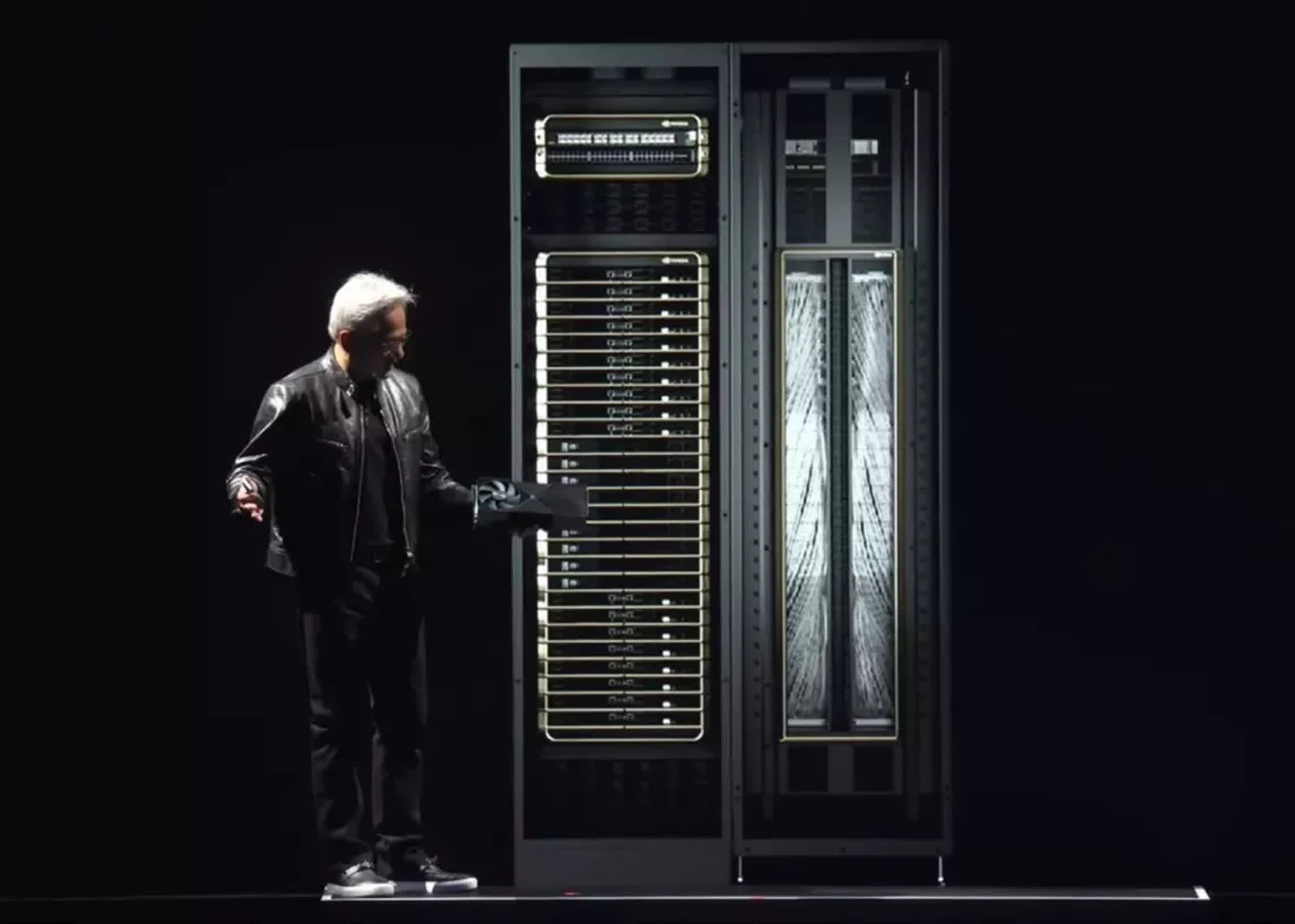Serving tech enthusiasts for over 25 years.
TechSpot means tech analysis and advice you can trust.
Recap: Nvidia CEO Jensen Huang addressed concerns about the company's demand for advanced packaging from TSMC earlier this week, clarifying that while their technological needs are evolving, overall demand remains robust. Specifically, Nvidia is transitioning from CoWoS-S to CoWoS-L, representing a significant advancement in its chip architecture as well as a major shift for TSMC.
Speaking on the sidelines of an event hosted by chip supplier Siliconware Precision Industries in Taichung, Taiwan, Huang explained the transition in Nvidia's chip packaging requirements. "As we move into Blackwell, we will use largely CoWoS-L. Of course, we're still manufacturing Hopper, and Hopper will use CoWoS-S. We will also transition the CoWoS-S capacity to CoWoS-L," he stated.
Huang emphasized that this shift does not indicate a reduction in capacity but rather an increase in capacity for CoWoS-L technology. "So it's not about reducing capacity. It's actually increasing capacity into CoWoS-L," he said.
CoWoS-L (Chip-on-Wafer-on-Substrate with Local Silicon Interconnect) represents a significant advancement over CoWoS-S in terms of performance and efficiency for high-end computing applications like AI and HPC.
The main difference between the two lies in the incorporation of Local Silicon Interconnect (LSI) chips for die-to-die connections. This seemingly small change enables a dramatic increase in interconnect density, directly translating into improved bandwidth capabilities. The technology can also potentially support up to 12 HBM3 modules, surpassing the capabilities of CoWoS-S.

Huang's comments were in response to recent speculation about Nvidia potentially reducing orders from TSMC. Tech analyst Ming-Chi Kuo had reported at one point that Nvidia was shifting its focus to the newer CoWoS-L technology, which could have implications for suppliers. Additionally, some Taiwanese media outlets suggested that Nvidia was cutting CoWoS-S orders from TSMC, potentially impacting the chip foundry's revenue.
These concerns may have some merit. While Nvidia's overall demand from TSMC remains robust, the shift to CoWoS-L is prompting TSMC to adapt its production capabilities.
TSMC is expected to double its CoWoS production capacity by 2025, with Nvidia projected to occupy more than half of this capacity. However, Nomura Securities projects that Nvidia's reduction in CoWoS-S orders could lead to a 1% to 2% decrease in TSMC's revenue, and some analysts predict that Nvidia might cut CoWoS-S orders at TSMC by as much as 80%.
Meanwhile, other players in Nvidia's supply chain may also feel the effects as demand for CoWoS-S packaging decreases.
In the broader context, Nvidia's shift to CoWoS-L is likely to accelerate the adoption of advanced packaging technologies across the semiconductor industry, setting new benchmarks for high-performance AI chips.









 English (US) ·
English (US) ·